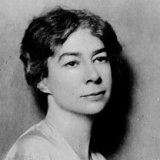Analysis of The Return
Sara Teasdale 1884 (St. Louis) – 1933 (New York City)
He has come, he is here,
My love has come home,
The minutes are lighter
Than flying foam,
The hours are like dancers
On gold-slippered feet,
The days are young runners
Naked and fleet --
For my love has returned,
He is home, he is here,
In the whole world no other
Is dear as my dear!
| Scheme | ABCB DEDE XACX |
|---|---|
| Poetic Form | Quatrain (67%) |
| Metre | 111111 11111 010110 1101 0101110 1111 011110 1001 111101 111111 0011110 11111 |
| Closest metre | Iambic trimeter |
| Characters | 281 |
| Words | 59 |
| Sentences | 2 |
| Stanzas | 3 |
| Stanza Lengths | 4, 4, 4 |
| Lines Amount | 12 |
| Letters per line (avg) | 18 |
| Words per line (avg) | 5 |
| Letters per stanza (avg) | 72 |
| Words per stanza (avg) | 19 |
Font size:
Submitted on May 13, 2011
Modified on April 04, 2023
- 17 sec read
- 126 Views
Citation
Use the citation below to add this poem analysis to your bibliography:
Style:MLAChicagoAPA
"The Return" Poetry.com. STANDS4 LLC, 2024. Web. 27 Apr. 2024. <https://www.poetry.com/poem-analysis/34581/the-return>.


Discuss this Sara Teasdale poem analysis with the community:
Report Comment
We're doing our best to make sure our content is useful, accurate and safe.
If by any chance you spot an inappropriate comment while navigating through our website please use this form to let us know, and we'll take care of it shortly.
Attachment
You need to be logged in to favorite.
Log In